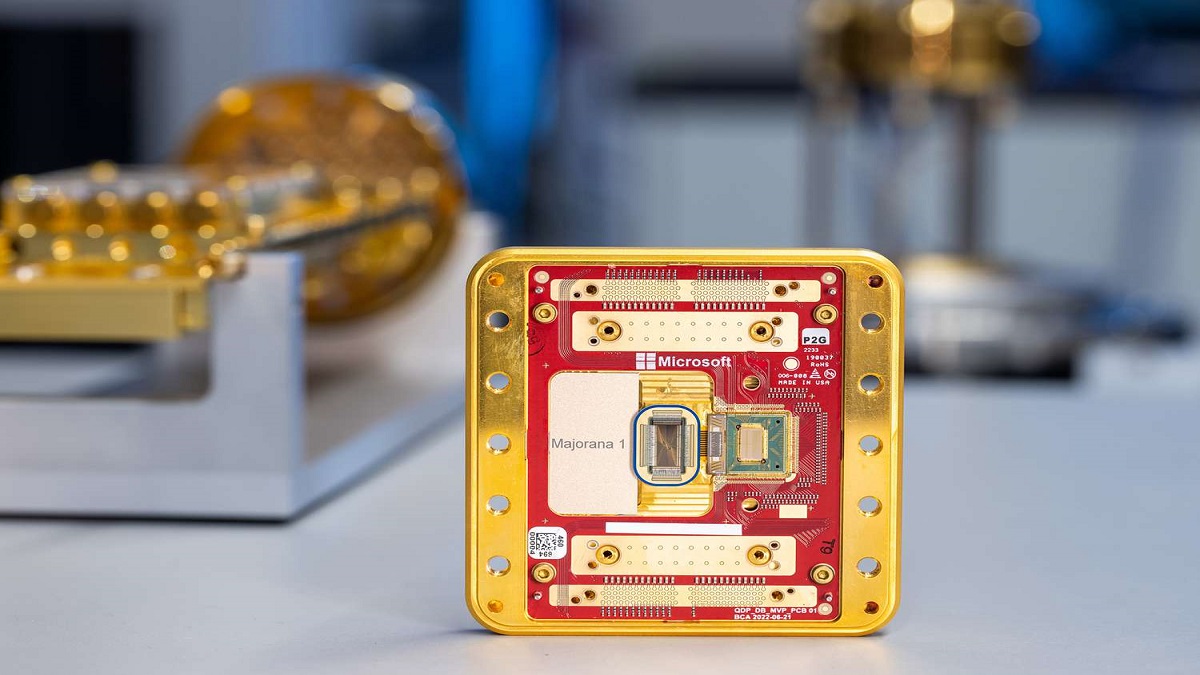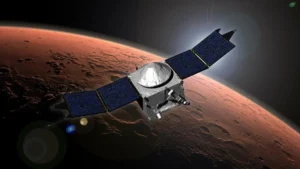Microsoft has taken a major step forward in quantum computing with the introduction of its Majorana 1 chip, a processor built using a novel topological core architecture. This breakthrough could significantly change the landscape of computing, offering a stable and scalable approach to quantum computing that aims to solve complex industrial and scientific problems. Unlike traditional quantum chips, Majorana 1 introduces topological qubits, which are inherently more robust against errors.
What Makes the Majorana 1 Chip Different?
At the core of Majorana 1 lies the use of topological superconductors, a new state of matter that enables the creation and control of Majorana particles. These particles help form topological qubits, which are far more stable than traditional qubits used in quantum computing today. Stability is a critical challenge in quantum computing, as errors can easily disrupt quantum calculations. With this new chip, Microsoft aims to reduce error correction requirements, making quantum computing more practical and scalable.
According to Microsoft, the topological approach allows qubits to maintain their states more efficiently, which is essential for performing large-scale quantum computations. If successful, this could lead to quantum computers that are reliable and capable of solving real-world problems in ways classical computers cannot.
How Does Majorana 1 Enable Large-Scale Quantum Computing?
One of the most significant features of Majorana 1 is its scalability. Microsoft envisions a future where millions of qubits can be integrated into a single, compact chip. Why is this important? Because the true power of quantum computing comes into play only when large numbers of qubits work together.
With traditional quantum chips, adding more qubits increases errors and makes computation unstable. However, Majorana 1 aims to eliminate this bottleneck by using topological qubits, which are less prone to noise. If successful, this approach will allow quantum computers to handle complex simulations, encryption, and optimization tasks—problems that classical supercomputers struggle to solve.
What Makes the Control System More Efficient?
Unlike existing quantum chips that require complex analog tuning, the Majorana 1 chip introduces a fully digital control mechanism. This means that instead of relying on delicate adjustments, Microsoft’s new processor uses voltage pulses to control qubit states. This digital approach makes quantum computing more practical, reducing error sources and simplifying quantum operations.
By enhancing efficiency, this chip could be a game-changer for industries looking to leverage quantum computing for advanced problem-solving. Microsoft is confident that Majorana 1 is a step toward building a fully functional quantum computer, one that could transform areas like cryptography, materials science, and artificial intelligence.
Why Does This Matter for the Future of Computing?
The launch of Majorana 1 marks a significant milestone in quantum computing. If Microsoft’s approach works as expected, it could bring us closer to building quantum computers that solve problems beyond the reach of classical systems. From drug discovery to climate modeling, quantum breakthroughs could reshape industries.
Microsoft’s focus on scalability, stability, and efficiency sets it apart from other quantum computing efforts. The company has been working on this topological approach for years, and with Majorana 1, it is now closer to making practical quantum computing a reality.
As the race for quantum supremacy continues, Majorana 1 positions Microsoft as a key player in the field. If the technology proves scalable, we could soon see quantum computers solving problems once thought impossible.
Key Highlights of Microsoft’s Majorana 1 Chip
| Aspect | Details |
|---|---|
| Why in News? | Microsoft unveiled Majorana 1, a quantum chip using topological qubits, promising stability and scalability. |
| Core Innovation | Uses topological superconductors to create Majorana particles, reducing quantum computing errors. |
| Scalability | Designed to integrate millions of qubits, enabling large-scale quantum computing. |
| Control Mechanism | Uses digital voltage pulses instead of analog tuning, improving efficiency and reducing errors. |
| Potential Impact | Could revolutionize cryptography, AI, materials science, and complex problem-solving. |



 NASA Loses Contact with MAVEN Spacecraft...
NASA Loses Contact with MAVEN Spacecraft...
 US FDA Qualifies First AI Tool to Accele...
US FDA Qualifies First AI Tool to Accele...
 11th India International Science Festiva...
11th India International Science Festiva...







